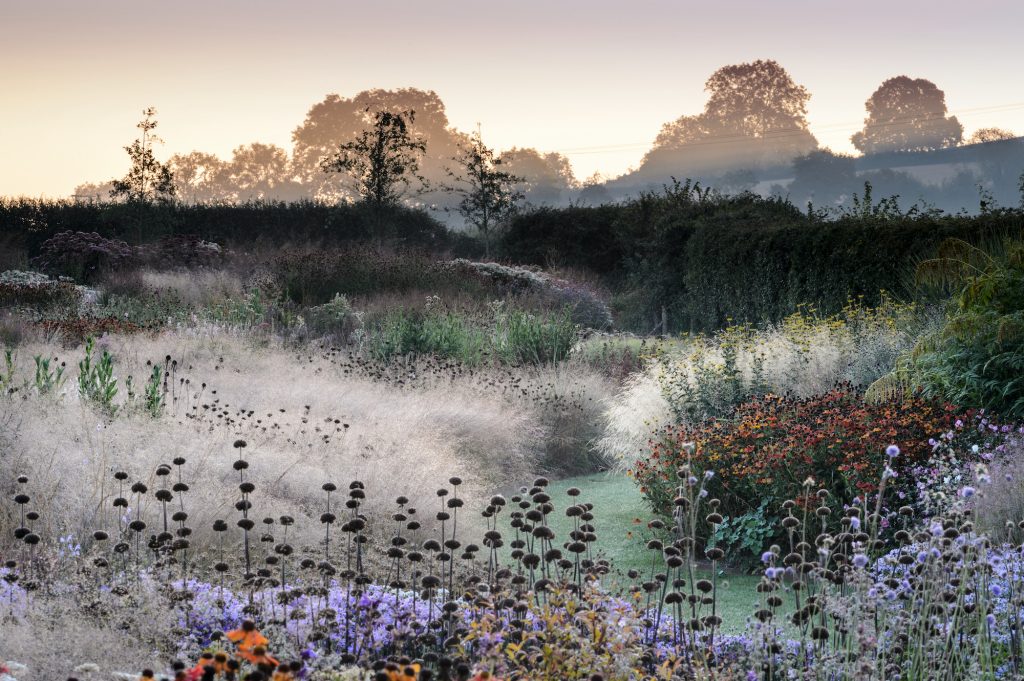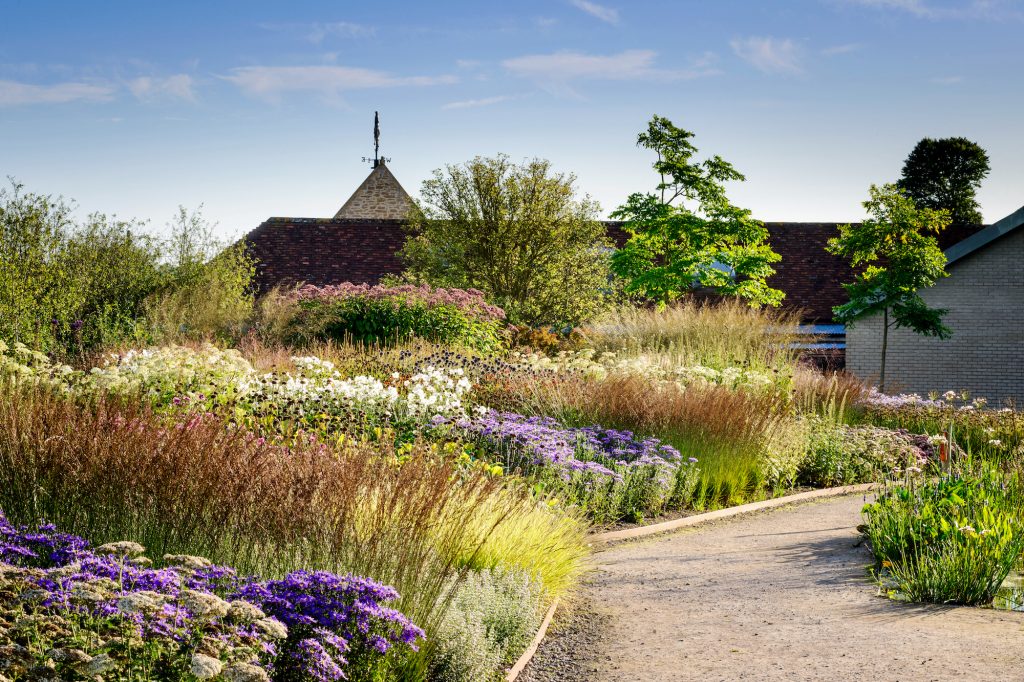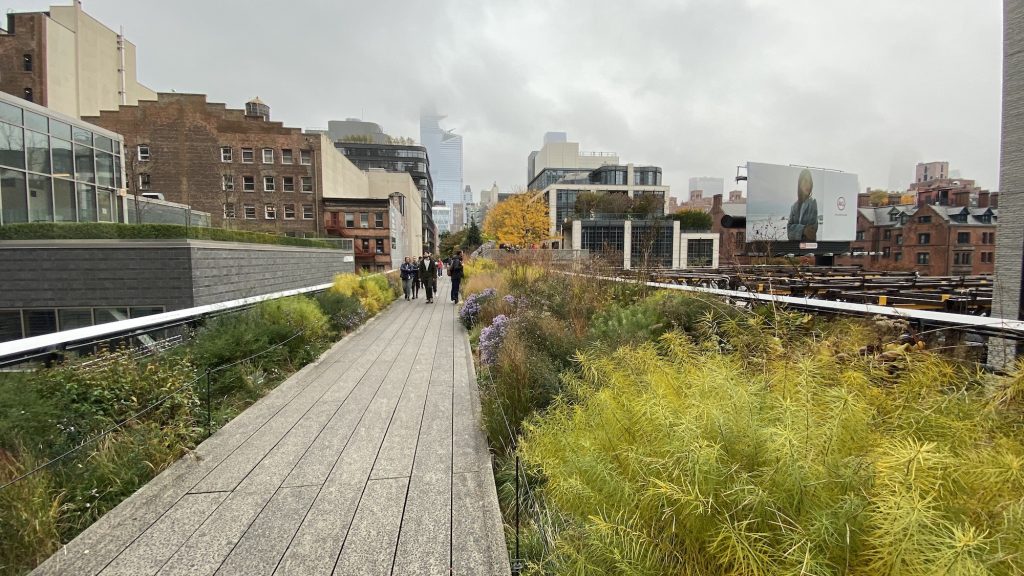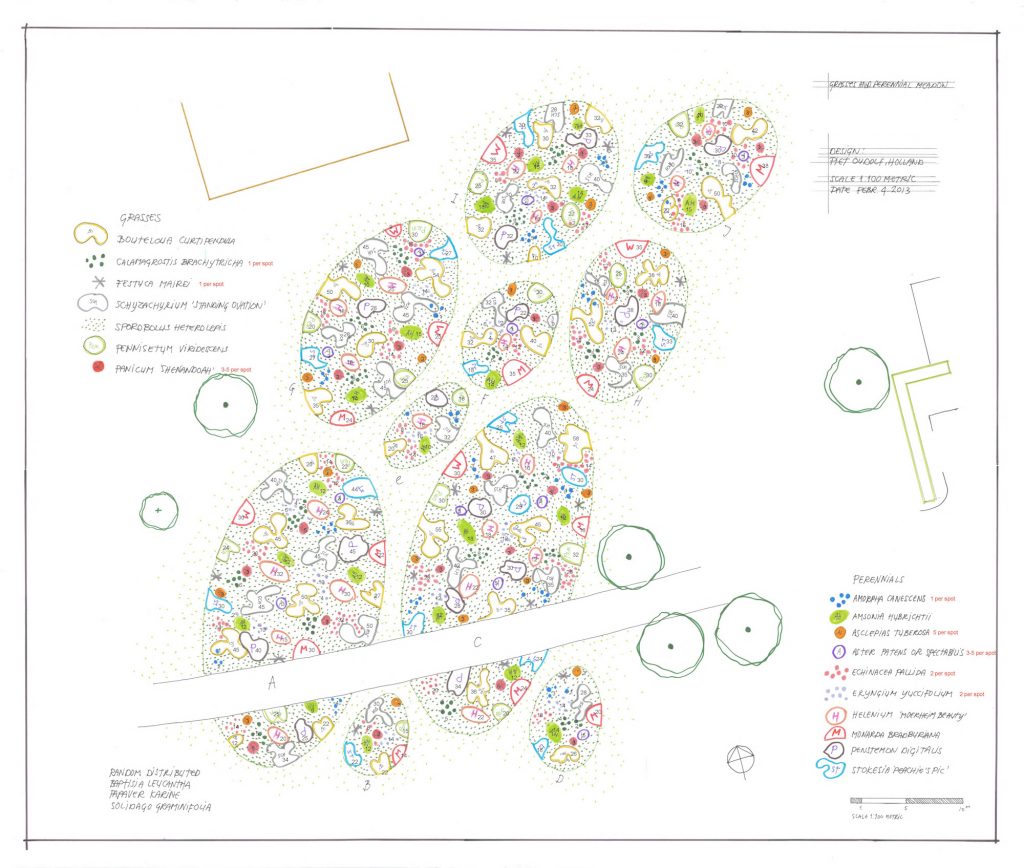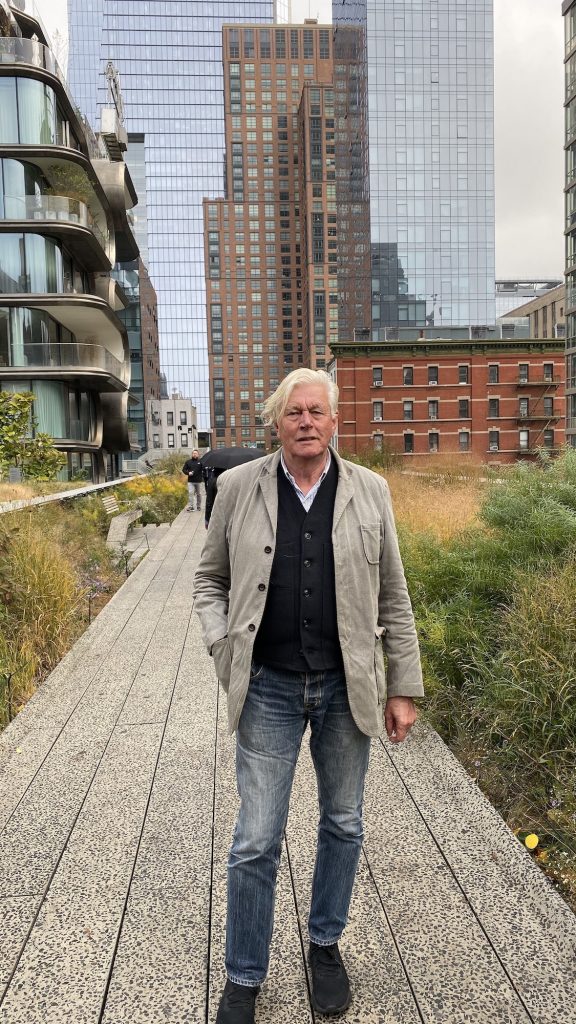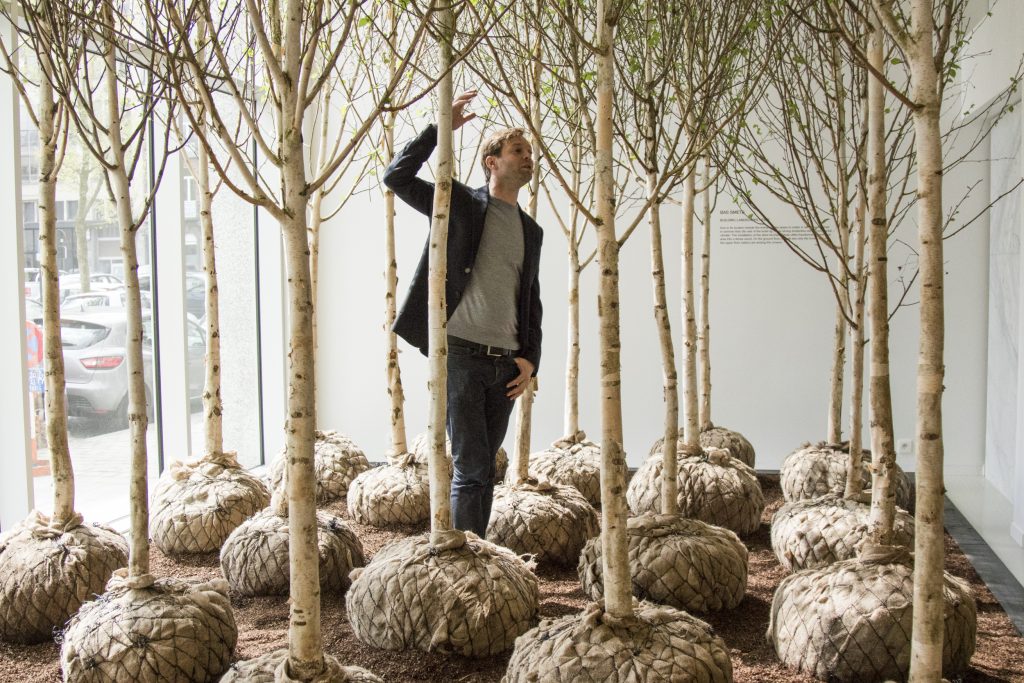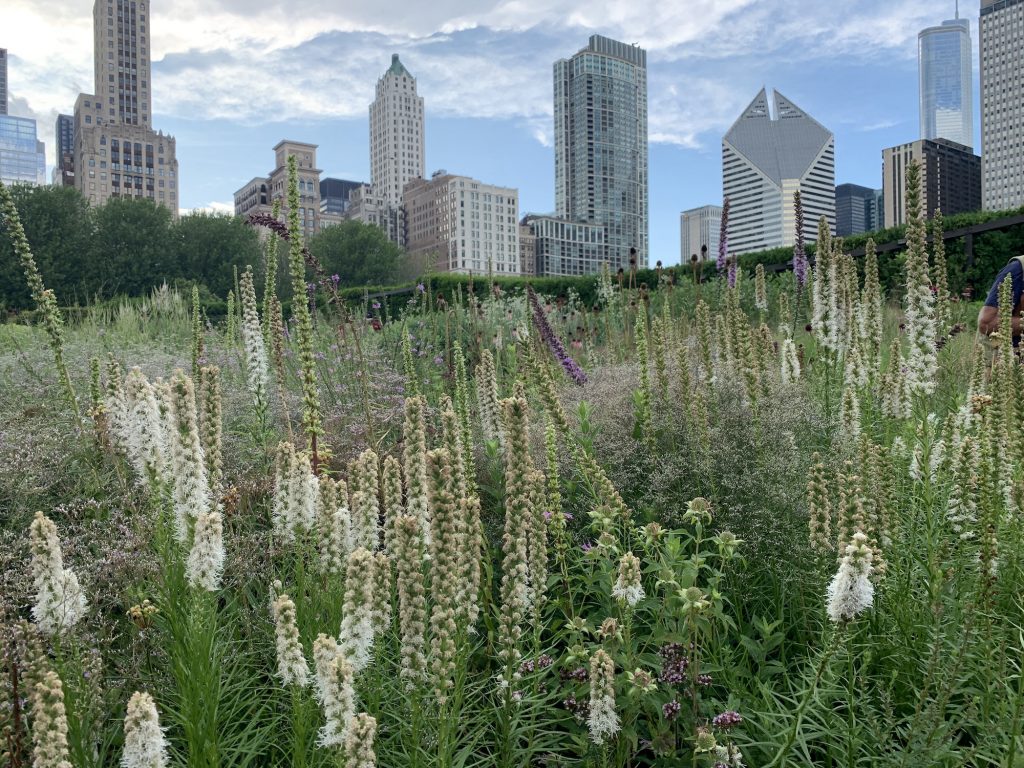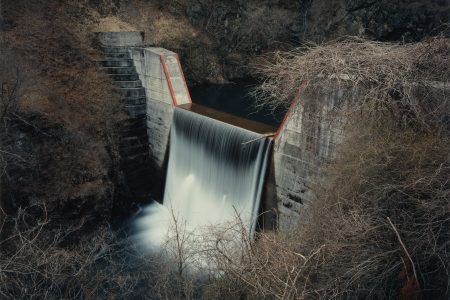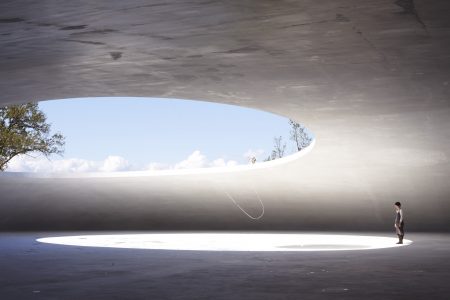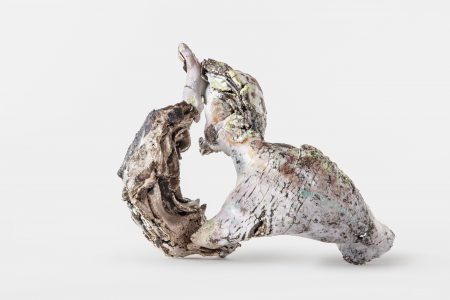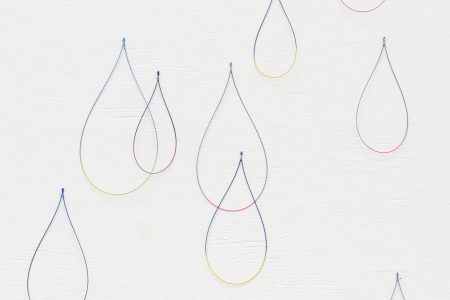
Piet Oudolf & Bas Smets
A conversation between two landscape architects about plants, soil and the future of our cities. A special interview that first appeared in the A/W 2021 issue of TLmag36: All Is Landscape, guest curated by Bas Smets.
Piet Oudolf and Bas Smets, two leading landscape architects, both from the Low Countries (Holland and Belgium respectively), are subtly transforming our cities, parks, cultural sites and more through their visionary ideas on the landscape and how it affects our everyday lives. While their practices are quite distinctive, there is a shared appreciation for the power of the right plants, good soil and the urgency of bring more nature into our urban settings.
Bas Smets: I was thinking of the relationship between nature and the landscape or nature and the garden, especially this notion that the land is transformed into a landscape through a cultural process. I am interested in your knowledge on plants, how does a gardener relate to nature?
Piet Oudolf: We don’t live in nature anymore. The only thing we know is cultivated landscapes, even the bigger landscapes are made by people. Nature is just a small part of the world today, most of it is made by man. I would say, everything outside of our control you can call nature.
B.S.: So, we can make nature?
P.O.: We are a part of nature, so we can make nature. Let’s say, we can create more nature.
B.S.: We live in such artificial environments, in manmade environments. Can we install a type of nature that can then grow on its own? Can we invent an urban landscape for our urban environment?
P.O.: I think so – It is all about diversity and about management. When we make nature, we don’t get everything we make but everything that comes with it in the first stages of creating it. The pioneering plants that might jump in and overrule or destroy what we’ve made. I think there are so many nuances as to what we understand as nature.
B.S.: Some philosophers say the moment we look at true nature, that it is no longer nature anymore; It is only nature when we have not seen it, meaning it is always outside of ourselves.
P.O.: Probably that is true. I think we sell a message today about nature and being green, but I think it is more complicated than that.
B.S.: Nature is a difficult word and world. I wonder what your take is on these last 5-10 years with so many architects trying to make green buildings – green roofs, green walls, trees planted on balconies, etc.
P.O.: I think it depends on what it does for the people living in the housing – what they experience themselves. Green management costs are high, the maintenance is high. You can see green roofs – as insulation and isolation – as something that is needed and it looks good, but it is difficult to create something that really works and is well maintained. But anything that tries to positively contribute to our future on earth is good.
B.S.: I agree. It is something I struggle with. I always think it is better to plant a good tree with good soil on the exterior and smaller trees on the roofs or balconies…
P.O.: I think every tree on a balcony should be replaceable because it cannot fill its life cycle. …that is my opinion after seeing so many green buildings. Of course, it does open up the world’s eyes to what is possible; maybe that is a metaphor for the whole world of architecture.
B.S.: What I often like to use are climbing plants because they have their feet in the ground. I think they are really underused.
P.O.: Yes, and I also use climbing plants on a balcony that can hang down and which can be easily cut from lower balconies together with good shrubs that you can plant in that situation.
B.S.: Which project would be a good illustration of hanging plants?
P.O.: For the Highline in New York we planted a variety of hanging plants that work well from the street-side up and from above down.
B.S.: Another thing I often struggle with is this notion of native plants. Many cities we work with have their lists of plants that must be used, but the climate is changing…so how do you plant trees for a changing climate?
P.O.: I think this restriction is so useless. Plants that benefit our community and contribute to diversity, to the seasonality should be allowed to be used. If you only use native plants you can be very limited, particularly in small countries. Because the world has changed so fast, you have to think about if we only use native plants in our gardens, we lose a season of flowering plants. There are so many plants that will never take over the native plants and they contribute to the diversity of the community…
B.S.: I agree, but I wanted to hear it from you.
P.O.: I think this viewpoint is changing. Universities are doing research and seeing that It makes sense to use more plants that are non-native for diversity … nowadays there is more diverse plantings in private gardens than in the countryside, or nature, as you say.
B.S.: What should we do? Make a list of invasive plants that we should not use?
P.O.: Yes. I would say that a list of invasive plants that we cannot use…Otherwise, you cannot create with such restrictions. We want to make gardens in public spaces to get people interested in what they can do for the environment, get engaged with nature. We want to make gardens that remind you a little bit of what you want to see as nature.
B.S.: I have been thinking recently about putting botanical tags in our public parks so people don’t have to go to botanical gardens to learn about the plants, but they can see it in a public garden. Kind of like what Frederick Law Olmsted did in Central Park, where every once in a while, you have a tag saying which tree or plant it is.
P.O.: Yes, we construct our gardens by GPS, so we know exactly where every plant can be found. For example, at the Vlinderhof, which is a public garden in Holland run by volunteers, there is an app where you can see all the plants. You can also check the plants by GPS. The Lurie Garden in Chicago also has a list to see which plants are nearby to so that you can be aware of it when you see it. Every public space should have an app to be able to know what is around. If the plantings change, you change it in your app.
B.S.: This brings us to garden design. There has been some evolution in your work, of how you compose the garden, and I wonder what is the starting point when you make a garden? Is it the combination of the plants or the way they will change through the seasons? What do you envision when you get started?
P.O.: I start with planting ideas from the context of where I am, in the context of what the client tells me, and everything is in the context of now and what we can do for the future.
B.S.: And when you speak of the future are you thinking of trees and plants that can sustain more heat? Do you think of that already?
P.O.: Most plants are tolerable but we cannot just put plants from the south of France in Holland because it rains too much and it is too wet in the winter, or there too little sunlight, even if the temperature might allow them. So, we have to stick to what we have and the shifts are very slow.
B.S.: So, no need to panic?
P.O.: Not for the variety of plants. We should not start seeing tomorrow, Mediterranean type gardens in the north. We have to be aware of the environment. And you do have to think of the situation today… probably we have to think of the longer and heavier rainfalls we have and erosion of soils more than temperature. Soil erosion is probably the most concerning.
B.S.: What I try to do is make the soil more resilient…More draining soil
P.O.: Yes, drainage is the key, and nutrition. Not too rich or overfed. It is better to work with what the plants need and not overfeed them. Plants need the right circumstances.
B.S.: Enhancing the soil as it is, and using plants to make the soil better. I had a project in Brussels once where I didn’t have the money to make the soil better so I just planted clover and then the soil was changed by itself into grass. I never planted grass it just came by itself once the clover had enriched the soil
P.O.: It was a place with trees?
B.S.: It was a long lawn with trees surrounding it. I wanted a big lawn for people to use but I didn’t have the money to bring in a lawn. I’m interested in how we can, in a way, hack into the ecological succession between finding the right plants and process.
P.O.: It is both science and ecological.
B.S.: In the end, we touch on all of that – the quality of the plants, water, the soil, the site. I just finished the project in Arles, where we worked on concrete slabs and we had to bring in everything – soil, water, and invent a way of bringing nature back. But in the end, I told the client, it is not about going back to something but going faster into the future.
P.O.: I think that is true. While people focus on what I do with perennial gardens, in fact what I do first is create woodlands or things that can evolve over years. The woodlands are more dynamic than the perennial gardens and are in that sense more rewarding to the clients as it engages them in gardening.
B.S.: You said something earlier about the diversity in the gardens you make as being richer than the nature that surrounds them. I wonder, with the way we are going with the planet, if at some point we will have better ‘nature’ in cities than in the countryside?
P.O.: Yes, it is possible. In the countryside, particularly near farms, like where I live, you don’t see much diversity of plants. I have read several articles about this reality and I have seen that diversity in gardens can be higher than in nature/landscapes. I am not talking about alpine meadows, I’m talking about landscapes of what we know around cities and farm sites. Also, when we create new ecologies, it is very hard to get that right in the first years.
B.S.: Are you optimistic about the resilience of the plants? You said that a couple degrees more won ‘t change much…
P.O.: The one thing I know is that the plants will survive earth…
B.S.: (Laughs) That is an optimism seen from the plants’ point of view.
P.O.: I am optimistic on what people spend now on public spaces. Awareness is not just what I do but what we do together to make it better. I am just, how would you call me, what I do in the context of other landscape architects?
B.S.: It’s a good question, Names don’t really do justice…architect, landscaper, paysagiste in French …it shows our field is not defined…With all that you have done, is there something that you would still like to do or want to do?
P.O.: All of the projects that I have done and which have been successful, I never knew I would do them and I never had it in mind to do them, so I am open to ideas but at this point, I’ve been working a lot and I want to reduce the work and to have time for myself. I’m still in big projects such as the Calder Museum in Philadelphia, the London Camden Highline, and a big project with Herzog and de Meuron in Basel, very good projects but nothing too big. I don’t want anything too big.
B.S.: I think we should bring gardens back into the city realm. As you said, many people don’t see the seasons or have gardens. So, to bring that into the public space is essential.
P.O.: I have noticed that they have become socially important for neighbourhoods. Just a square and bench with some trees will not bring people together like a garden.
B.S.: There is a new thing to be invented…not a plant, not a landscape, not a garden, but a hybrid. I do believe we have to bring more nature into cities, as they are getting bigger and bigger, nature is destroyed.
P.O.: From the roof to the street. No limits.
B.S.: Yes, as much as possible. For example, we planted a 1000 trees around the station in Lyon They asked me what kind of composition I had in mind and I said, there was is no formal composition, just as much planting as possible: where it can root, we plant. We have started to do readings of cities and spaces to see where we can add soil.
P.O.: Yes, that is good. I think that is the future… people will always want to build so we have to be progressive about our thinking of the city.
B.S.: We should see the city as a lab. We are continuously building it…
P.O.: And also neighbourhood gardens, I am a big advocate for neighbourhood gardens…they are not design but they give an informality to a city that comes very close to ourselves.
B.S.: I would love to come see your garden at some point…
P.O.: You are welcome. Next year or this year?
B.S.: Yes, maybe spring next year.
oudolf.com
@pietoudolf
bassmets.be
@bassmets
